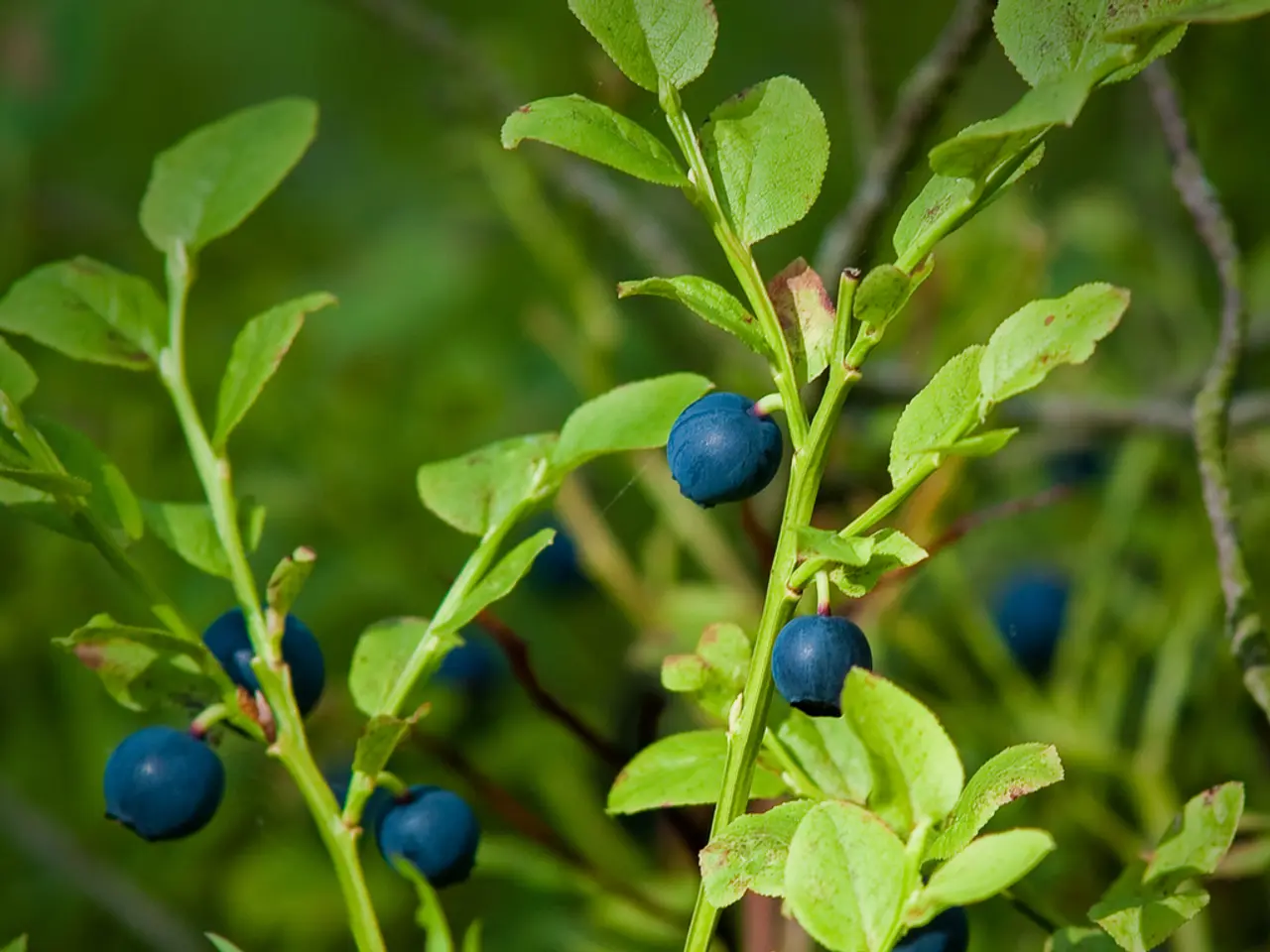Devastation of Raspberries by Fungal Disease
In the world of fruit cultivation, cane blight poses a significant threat to raspberry and blackberry plants. This article outlines the recommended strategies for managing cane blight, focusing on good cultural practices and, when necessary, fungicide applications.
Cane blight is caused by the fungus Leptospaeria coniothyrium. The disease can be prevalent in moist conditions, with spores germinating and penetrating plants through pruning wounds, insect punctures, fruit stem breaks, and other wounds. As the disease progresses, fungal fruiting bodies are formed in older cankers, completing the disease cycle. Dead canes continue to produce conidia and remain a source of infection for several years.
To reduce the potential for cane blight infection, it's essential to implement several key measures. Watering at the base of plants rather than overhead helps prevent fungal diseases like cane blight. Mulching around the base can conserve moisture and reduce weed competition, improving plant health and resilience against disease.
Pruning and removing infected canes promptly is another crucial step. This practice not only reduces sources of infection but also improves air circulation within the planting. Good weed control within and between rows can further help improve air circulation, reducing humidity and discouraging fungal development.
In case of blight appearance, removal of affected plants or canes may be necessary to protect healthy plants. Fungicide treatments can be applied preventatively or at the first signs of disease, following label directions carefully, especially for timing with respect to harvest. For example, chlorothalonil fungicide can be used to control shoot blights during early shoot growth stages and continued through susceptible periods.
Additional recommendations include spacing plants well to ensure good air circulation and reduce humidity around canes. Maintaining plant vigor through proper watering and nutrition also helps reduce disease severity. After harvest, removing and destroying old fruited floricanes and infected primocanes can help prevent the spread of cane blight.
It's also worth noting that cane blight primarily affects black raspberries but also occurs on red and purple varieties, as well as blackberries and dewberries. To prevent the spread of cane blight and other diseases and pests, removing wild brambles, especially wild raspberries, is advisable. Keeping plantings free of insects can prevent wounds that serve as entry points for the cane blight fungus.
In summary, combining preventive cultural practices like watering method, pruning, good spacing, mulching, and timely fungicide applications forms the recommended strategy to manage cane blight in raspberries and blackberries effectively. Immediate removal of infected canes or plants further limits disease spread. By adhering to these guidelines, growers can protect their raspberry and blackberry plants from cane blight and ensure a bountiful harvest.
[1] University of California Agriculture and Natural Resources. (2021). Cane Blight in Raspberries and Blackberries. Retrieved from https://ucanr.edu/sites/berrycrops/files/312681.pdf [2] Michigan State University Extension. (2021). Cane Blight of Raspberries and Blackberries. Retrieved from https://www.canr.msu.edu/news/cane_blight_of_raspberries_and_blackberries [3] Cornell University Cooperative Extension. (2021). Cane Blight of Raspberries and Blackberries. Retrieved from https://cce.cornell.edu/extfiles/files/pubs/g1912.pdf [4] North Carolina State University. (2021). Cane Blight of Raspberries and Blackberries. Retrieved from https://content.ces.ncsu.edu/cane-blight-of-raspberries-and-blackberries [5] Oregon State University Extension Service. (2021). Cane Blight of Raspberries and Blackberries. Retrieved from https://extension.oregonstate.edu/gardening/cane-blight-raspberries-and-blackberries
- Adhering to science-based strategies like proper watering, pruning, spacing, and fungicide applications can contribute significantly to effective pest management in raspberry and blackberry cultivation, particularly for managing cane blight, a medical-condition affecting these plants, ensuring health-and-wellness of the crops.
- Furthermore, understanding the disease cycle of cane blight, caused by the fungus Leptospaeria coniothyrium, and implementing good cultural practices can help reduce the impact of this disease on raspberries and blackberries, in addition to protecting against other related medical-conditions and pests.




